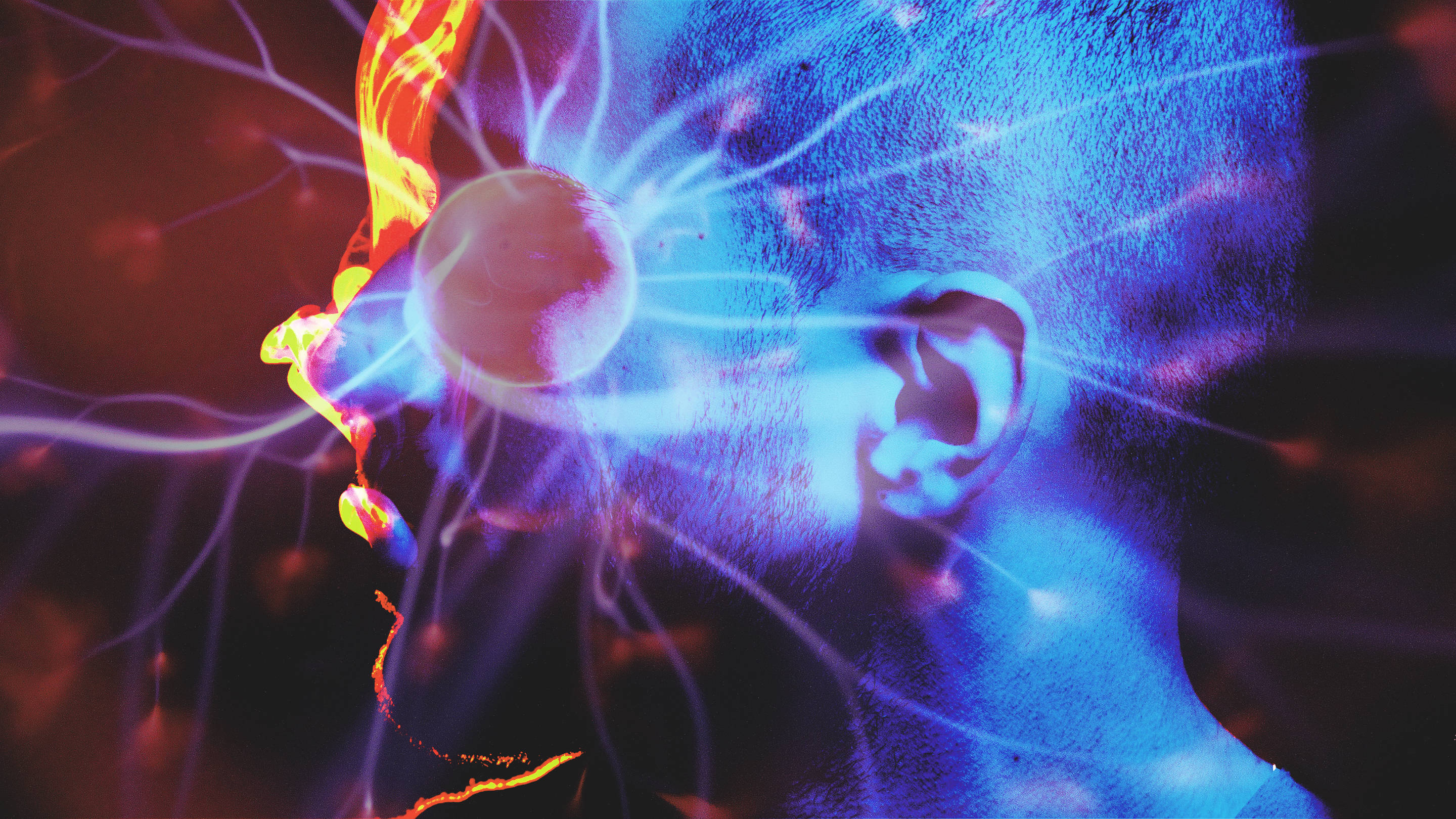
Could Neuroscience Help You Get Over Your Ex?
Playboy talks to top researchers on how neurofeedback is letting people process heartbreak
Romantic breakups can be traumatic experiences. For some, time heals the wounds. For others, getting over someone means getting under someone else. But there are those who simply cannot shake off the ghosts of the past and are haunted by the specter of loss.
“People pine for love, they live for love, they kill for love, and they die for love,” declares Dr. Helen Fisher, author of six books on love and attachment and chief science advisor to Match.com. “When you look back at our culture–look at the poems, the songs, the stories, the sitcoms, the magazine articles, the operas, the plays, the ballets, the holidays. I think we've evolved three distinctly different brain systems for mating and reproduction: the sex drive, feelings of intense romantic love, and feelings of deep attachment to a partner. These systems are drives. They're not emotions. These basic brain systems don't die easily. Nobody gets out of love alive.”
Like it or not, our ancient brains have biologically programmed us to want to pass on our DNA by coupling with the right partner. When we lose a partner, we do not simply lose habits, patterns and social connections. We are losing the future. But even for those who do not want children, loss can be deeply felt.
Minneapolis-based singer-songwriter Dessa is one of those people for whom a lost love lingered on for years. After meeting her ex-boyfriend in her early twenties and dating for two years, the 37-year-old performer could not shake off feelings for him. “We wound up reentering one other's orbits regularly,” she recalls. “Even after four years would go by, we'd reconnect.” The situation became a life impediment that she did not know how to tackle.
As sex and relationships educator Anne Hodder-Shipp, ACS, points out, ending a relationship is “like a huge mindfuck, especially if you associate that person with basic needs like love, affection and validation,” she says. “Even if you've confidently decided 'I need to peace out from here,' your brain still follows those patterns. That's one of the reasons why it's so difficult to consistently be confronted by ex-partners on social media or bumping into them or sharing inner circles. While you're emotionally working toward severing those ties and rebuilding your foundation, your brain lights up when you see these symbols of things that it associates with feeling loved, feeling worthy, feeling safe. It's like getting yanked in opposite directions.”
These systems are drives. They're not emotions. These basic brain systems don't die easily.
Dessa confesses that for many years she was ready to take the advice that a magazine therapist might give. “Make new friends, develop boundaries,” she quips. “I moved across the country and really distanced my life from his. Got a gym membership. And I was still stuck. One night I ended up seeing a TED talk by a researcher named Dr. Helen Fisher. She put her research subjects into fMRI machines, and her findings indicated that there was a specific region of the brain that reliably activated when the subject was in romantic love. That region was different from maternal love or the love you have for a friend or a sibling. And that was really fascinating to me in part because it's counter-intuitive. You'd see this really distinct signature of specifically romantic love. If I could find my love then maybe I could take it out.”
Fisher has conducted numerous studies of people in love since 2005. During the 2005 study she and her research team put people in brain scanners and were able “to define the major pathway of intense romantic love,” she says. They put 17 people who were madly and happily in love, predominately college students, into the brain scanner. For the 2010 study, they put in 15 people who had just or recently experienced romantic rejection. All of them took numerous questionnaires before being scanned. Then in the scanner, each was shown a picture of the person they loved and then an emotionally neutral person of the same gender and general age, and their brain responses were recorded.
Then, in another study, this one using long-married participants, they examined happiness in the brain. “For those who scored very happy on a questionnaire measuring happiness, we found activity in three brain regions,” notes Fisher. “A brain region linked with empathy. A brain region linked with controlling your own stress and your own emotions. And a brain region linked with what I call positive illusions, the ability to overlook what you don't like about somebody and focus on what you do. That's valuable.”
For those who were rejected, activity indicated that they were still madly in love, despite having been dumped. “We found activity in the ventral tegmental area [VTA], the region in the base of the brain that makes dopamine, a natural stimulant that activates many other parts of the brain,” explains Fisher. “We also found activity in brain regions linked with feelings of attachment. You don't stop feeling attached. And we found activity in three brain regions linked with craving and addiction, as well as a brain region associated with physical pain.”
When we lose a partner, we do not simply lose habits, patterns and social connections. We are losing the future.
Inside the Secret World of Halal Dating and "Minder"
Dating apps targeting the Muslim community are putting a new spin on Islamic love.

Inspired by Dr. Fisher's work, Dessa began a passion project of many months that led her to the Center for Magnetic Resonance Research at the University of Minnesota. They recreated Fisher's protocol, having her look at pictures of her ex-boyfriend and an attractive male friend whom she did not have feelings for while lying in an fMRI machine. Similar to an MRI, an fMRI (functional magnetic resonance imaging) captures images of blood flow in the body; in this case, certain regions of the brain.
“Those images served as a control,” explains Dessa. Naturally, her ex still sparked her brain. “We found that my brain lit up in the same region as Dr. Helen Fisher's subjects did. I got to see my skull spinning in 3D. It was pretty rad. It felt exciting to have even just a scrap of objective evidence for such a subjective experience.”
Armed with her before and after brain scans, and aware of her own romantically addicted impulses, Dessa staged her own intervention nearly two years ago. Through Twitter, she found researcher Penijean Gracefire who worked with neurofeedback, “which is like a treatment for patients with epilepsy who have behavioral problems or ADHD,” says Dessa. “Essentially you've got all these electrodes measuring your brain waves in real time, and then every time your brain behaves in a more desirable way, it's rewarded essentially with a little trill. I picked a vibraphone or a harp sound. You're trying to train your brain to behave differently, and in my case, we focused on the parts of the brain that were implicated in emotional attachment. Then we saw they were really hyperactive when compared to other 35 year-olds. [We wanted to] reduce some of that constant vigilance.”
Gracefire guided Dessa through nine half-hour neurofeedback sessions, playing the selected tones while she watched her brain waves onscreen. Our brains evidently like high-pitched sounds. As Dessa watched her brain waves moving on screen, her brain would try to emulate the patterns that would reward it with her sound of choice. This time she was not looking at any pictures nor focusing on her ex, just letting her brain take over.
“I didn't have to do anything,” says Dessa. “It's not like I was cutting up old photos or repeating a mantra. I was just holding still and waiting for my brain to change unconsciously. I'm a science nerd, so admittedly I had a lot of skepticism about that.”
The result of her experiment is that Dessa did feel less compulsion and obsession toward her ex and was able to be more objective about her past experiences with him. She has joked about how she believes that perhaps she does not exercise free will in the way that she thought, but the neurofeedback process did help her. Later EEG results and a brain scan by Olman reportedly displayed actual physiological changes.
An experiment in Colorado showed that people can also be convinced that something works even if it is not actually happening. A professor of psychology and neuroscience at the University of Colorado at Boulder, Dr. Tor Wager is the senior author of the 2017 laboratory study Frontal-brainstem pathways mediating placebo effects on social rejection. He and his fellow researchers recruited 40 volunteers who had gone through a negative breakup within the previous six months. As with the Fisher study, subjects brought a picture of their ex and of another friend of the same gender. They were experienced two types of pain: physical (a hot sensation on their left forearm) and mental (seeing their ex). It turns out that responses to both, while not exactly the same, lit up similar regions of the brain.
Then the subjects were each given a common saline nasal spray, with half of them being told that it would reduce their pain and negative emotions. “It had a pretty large effect on people's feelings of rejection,” says Wager. They did not perceive their ex as negatively as they had before, yet nothing had really changed other than the false suggestion of what they had ingested. While not mentioned in their paper, the researchers did follow up with subjects a week later and found that the placebo effect had a lasting and positive benefit. They did not follow up beyond that, but in the short term it seemed to have worked.
You can't have people pining over one person their whole life and not reproducing with somebody else. The brain is built to recover.
In other words, the new outlook on the exes meant the PAG likely produced dopamine rather than opioids, making the subjects feel better.
Beyond neuroscience, there are more organic ways to deal with a breakup. Hodder-Shipp says she has been doing dreamwork as her own personal form of therapy for nearly five years, and that it also works well for romantic heartache. It bypasses the conscious mind which she says is constantly running.
“Some people are busier than others, and my conscious brain is very much on fucking hyperdrive all the time,” explains Hodder-Shipp. Talking and self-awareness is well and good, but there are things going on “deeper below the surface. Dreams are really fascinating because they're incredibly misunderstood. They're undervalued and are just nothing but healing put into a tangible experiential form while you're asleep.”
As she puts it, your subconscious is waiting for your conscious brain to go to sleep to take multiple fragments from your life, then “choose characters and settings that mean something to you but don't make sense. Something is going to play out while you're sleeping, and you may or may not remember it when you wake up, but you are absolutely dreaming even when you think you're not. Your dreams are trying to help you see stuff that you're either disconnected or numbed out from. Or they're trying to help you feel something on a much more deeper experiential level so that you can relate it to your waking life and use it as a tool.”
Hodder-Shipp practices natural dream work. She has her clients write down their dreams when they wake up, email her the text, and then they discuss their feelings about them in their next session. Rather than focus on the symbolic significance of certain dream elements, she focuses on people's feelings about them and how it affects them mentally and physically, then gets to the root of what it all really means. Regular sessions can reveal more patterns and information that clients could apply to their lives.
She stresses that her goal in helping clients get past break-ups is not to “get over someone” but to help them understand what that person meant to them, what lessons were learned, and then move on from there. For those who want to recover faster from a devastating break-up, Fisher offers this thought: Treat romantic love as an addiction.
For people deeply in love, the nucleus accumbens, the main brain region also linked with all addictive behavior (substance and behavioral), becomes active. “Throw out the cards and letters,” advises Fisher. “Don't write, don't call, don't show up. Get the picture off your desk and off your iPhone and everywhere else. When you meet friends, don't ask about the person.” That also means don't check your friends' phones if they are linked to your ex via social media. “There's somebody camping in your head. You have to get them out.” In other words, go cold turkey.
“I haven't heard of people actually using neurofeedback like [Dessa],” says Wager. “People use neurofeedback for lots of things. It's sort of popular commercially now, and people are selling neurofeedback as a way of dealing with depression and anxiety mainly, which could be from a lot of things. It could in fact be related to rejection because people who were rejected have a much higher rate of depression. But I haven't heard about people going into neurofeedback specifically for rejection.”
“I think one of the messages from our study is that if you believe that you're going to be incapacitated or feel terrible forever, then you will,” says Wager. “If you believe that you have sources of support and help—you don't need to take drugs, but it could be any kind of support, it could be a friend—then it will actually have an impact on your feelings in your brain.”
Wager asserts that imagining a positive future for one's self, even in light of a recent terrible breakup, can make a difference. And acknowledging that “feelings will change over time and you will feel better and better,” he says. “Every door that closes is another door that can open, right? There's now potential for unknown good things to happen in the future. If you think about it, that's really the common pathway to shaping how you feel.” Self-appraisal is key.
“Neurofeedback could help you,” says Wager. “Or having somebody read your chi patterns and do Reiki on you could help you. But mainly it's because it gives you a sense of hope. That somebody is caring for you, that you have options, you have a path where you're doing something active for yourself just to make the situation better. You don't really need to pay for the neurofeedback or Reiki in order to have the real benefit of that. Probably the shortest path to recovery is by enhancing your own positive outlook over time and just taking steps to move on.”
Today, Dessa is able to talk about her situation clearly, and she certainly mined great artistic material out of it. Her latest album Chime is full of songs dealing with the subject, and she also wrote a well-received book about her experiences entitled My Own Devices: True Stories from the Road on Music, Science, and Senseless Love.
“Some of my [new] stuff definitely centers on love, but I'm not writing those torch songs in the same way,” says Dessa. “Since then I've met and crushed on dudes and been crushed on with varying degrees of success. That stuff still appears in my lyrics, but it's not this epic, tragic, sad love story that had been unfolding through a lot of my work beforehand. I'm an existentialist, and I still run a little bit blue. But now there's an opportunity to focus on the wider world, which is what you want to do as a mid-career songwriter. You don't want to be treading water in the same pool.”
“After I was done with it I wasn't like, 'Oh my ex, what do you mean? Never heard of him',” jokes Dessa. “But all the feelings that I've had like love and attraction and anger and respect, I still had those, but I just didn't feel so shook. I wasn't so compulsed to think about them. I felt relief and peace. Of course, it could've been a placebo. I'll take it either way. A placebo that works sounds great.”
RELATED

A Bootcamp Promises to “Heart Hack” the Sting of Breakups
With tantra teachers and the occasional spanking, a retreat in New York wants to heal the broken

Are We All Liars In The Beginning Of Relationships?
We all fudge the truth to make ourselves look more worthwhile to potential partners

Heartbreak in 100 Square Feet: Why Living in a Van Is Now Aspirational
The #vanlife movement tempts many couples with its glamorized alternative to the American Dream

When Did Seeking a Relationship Become a Weakness?
"Claiming I wanted a partner didn't make me desirable, it made me desperate"






